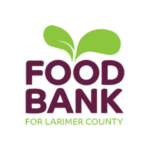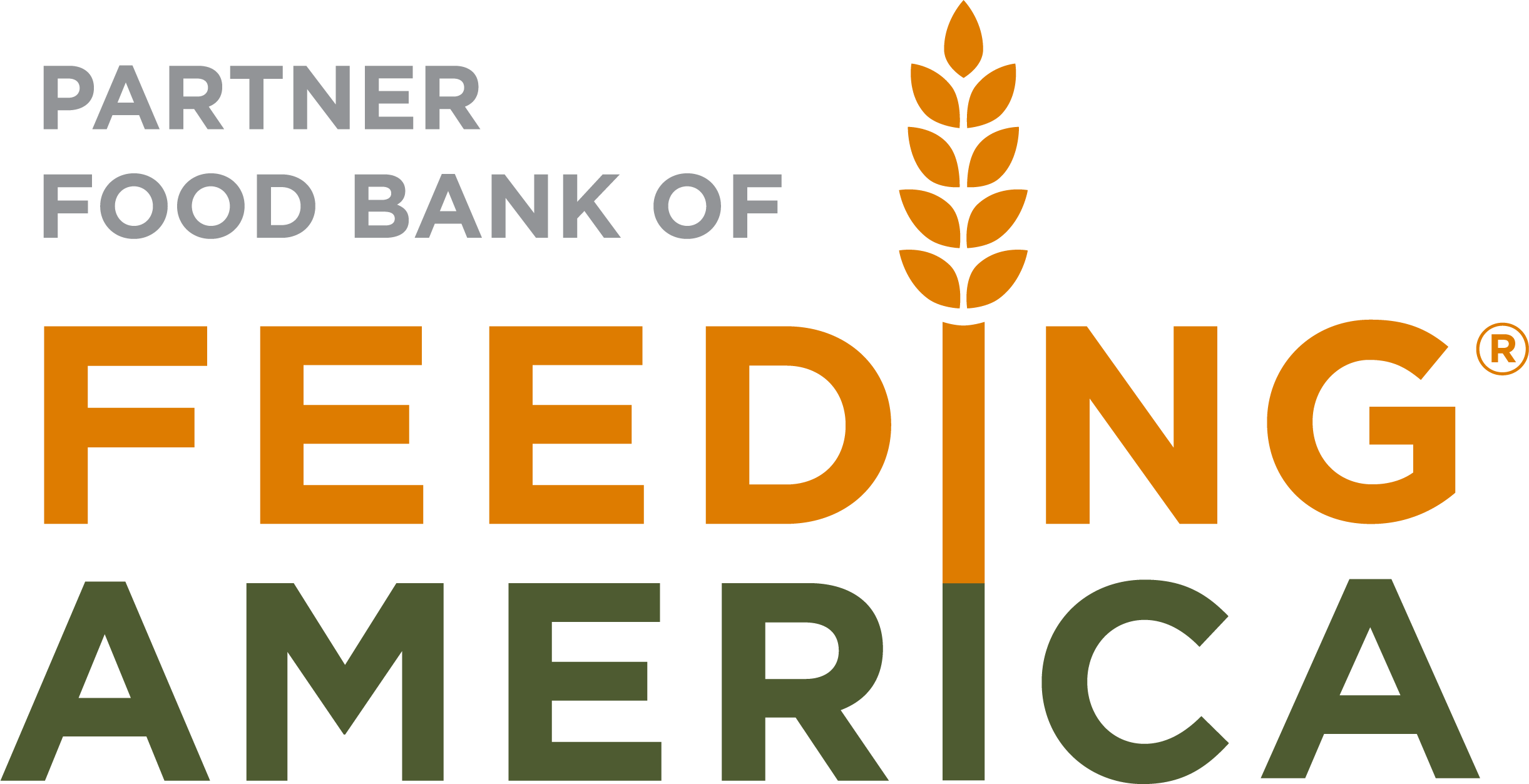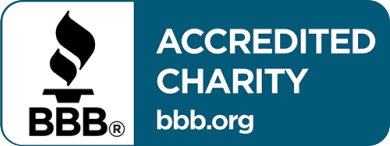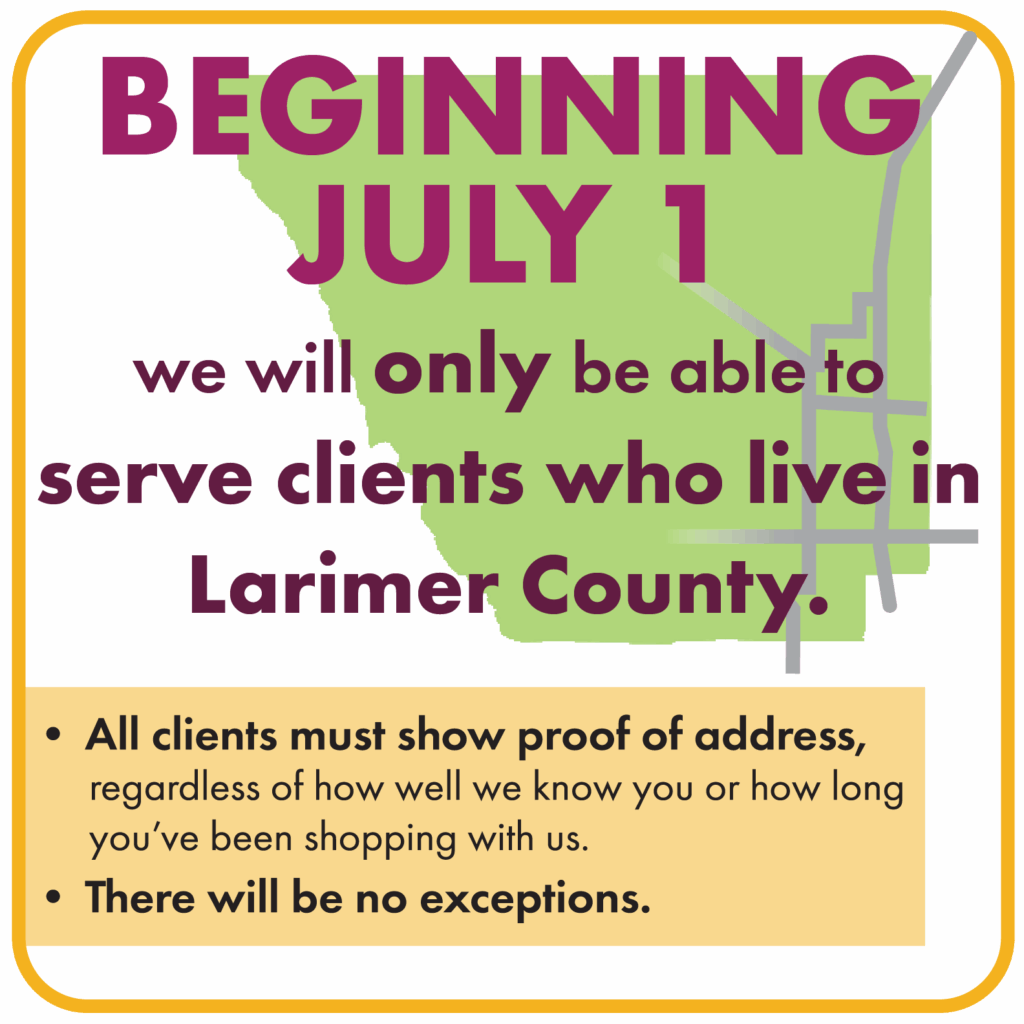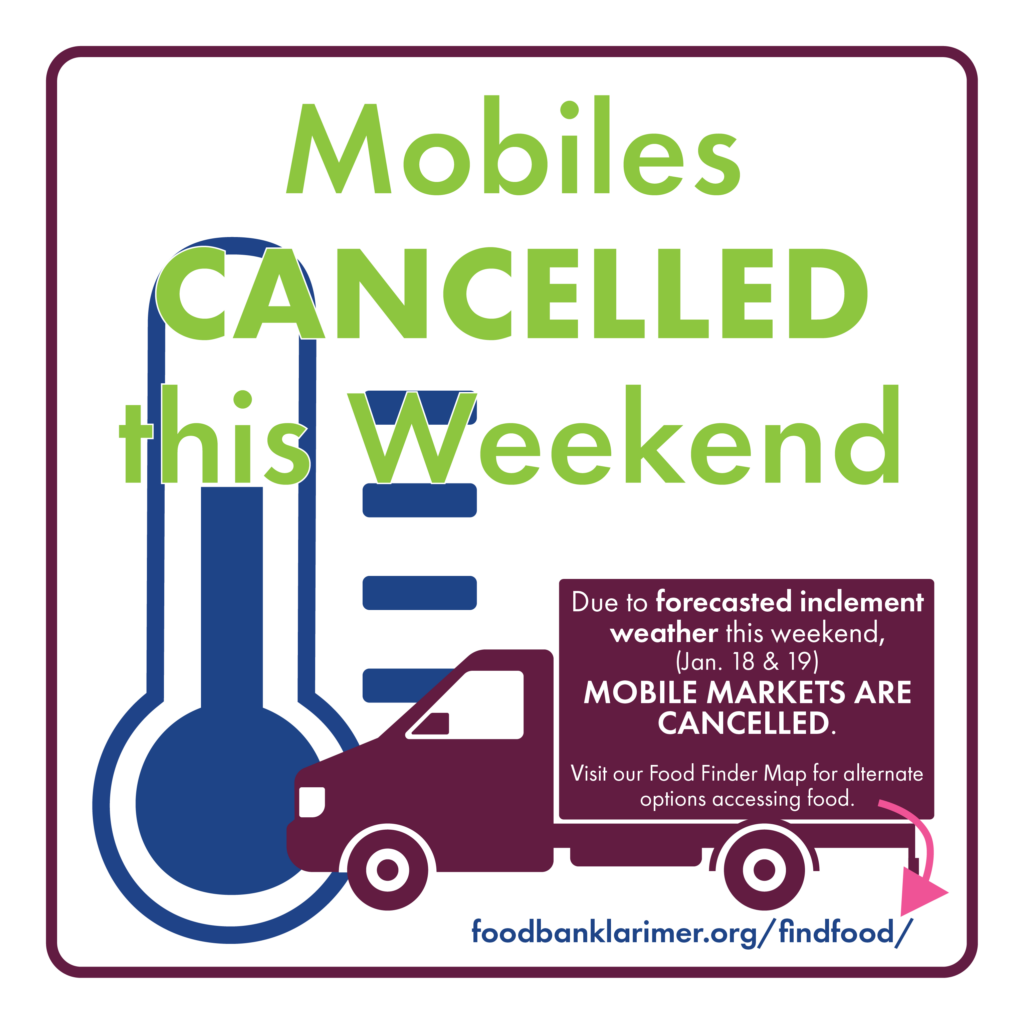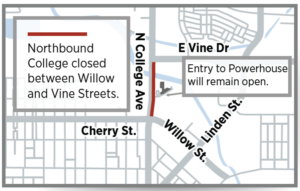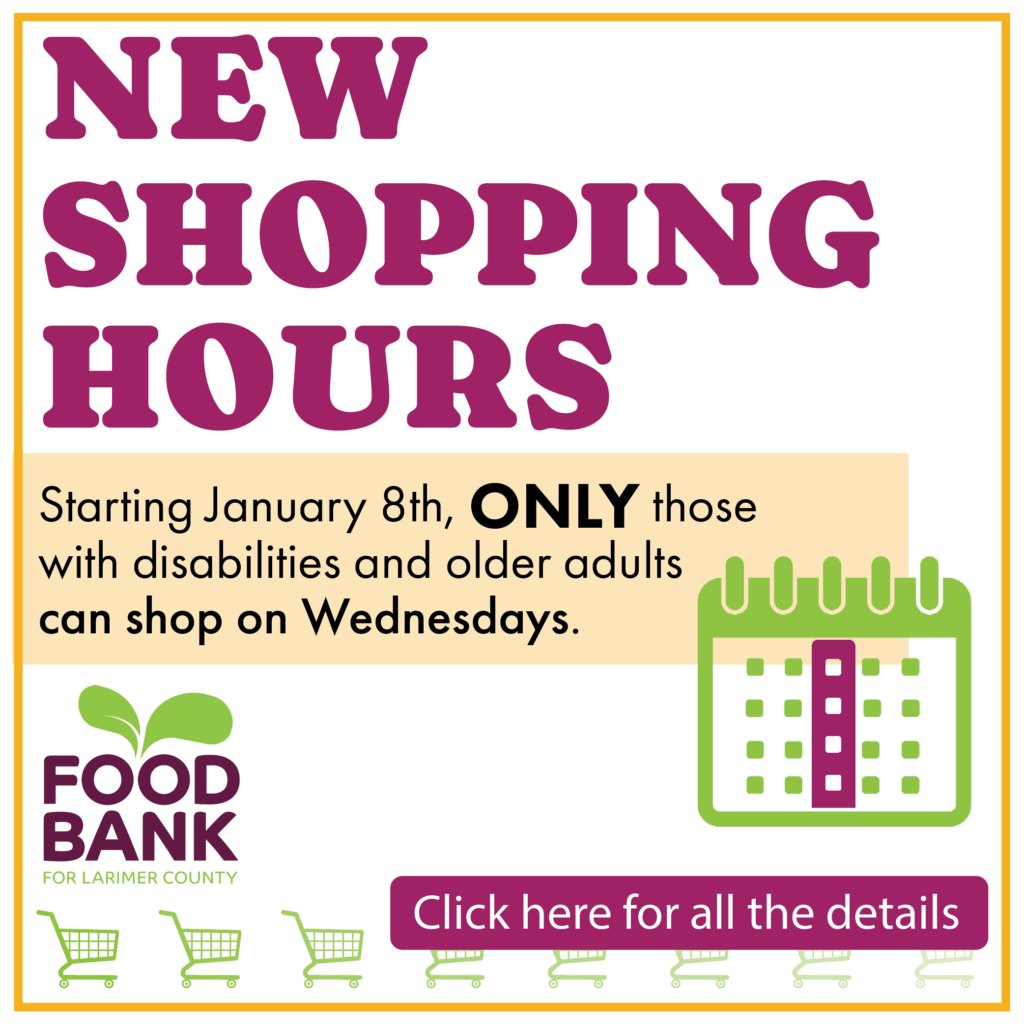Not everyone who uses the Food Bank qualifies for government assistance or meets an official definition of “low income.” Food insecurity is a complicated issue, and a symptom of many broader ranging problems, like systemic poverty and high living costs. To help ensure all people have access to nutrition, food banks remain critical to addressing the needs of people who struggle with food insecurity, but aren’t eligible for government benefits, like SNAP.
The word poverty refers to the Federal Poverty Guidelines, which are determined annually by the U.S. Department of Health and Human Services (HHS). Financial hardship creates food insecure experiences for many more families than most people realize.
For 2025, the HHS defines poverty for a household of four people as a household income of $32,150 or less per year. That number is shockingly low, as households that earn even as much as twice that income still struggle to pay bills. This is especially true in a place like Larimer County, where housing costs are almost twice the national average.
In Larimer County, 11% of the population is food insecure. Of that food insecure population, 40% don’t qualify for federal help (SNAP benefits). That’s where the Food Bank comes in. The table below simply provides a visual to compare the great differences between how different entities view household income; the federal poverty guidelines and SNAP income limit are two ways we can see definitions of “poverty” or need. When we compare these amounts to the median household income where we live, we can see the large gap between households that qualify for federal benefits and the median household.
Compare These Annual Income Measurements
| Household Size | Federal Poverty Guidelines | Income limit to qualify for SNAP (in Colorado) | Larimer County Median Household Income |
| 2 | $21,150 | $42,300 | $95,050 |
| 3 | $26,650 | $53,300 | $106,950 |
| 4 | $32,150 | $64,300 | $118,800 |
| 5 | $37,650 | $75,300 | $128,350 |
| 6 | $43,150 | $86,300 | $137,850 |
ALICE (Asset Limited, Income Constrained, Employed)
Not all Food Bank clients live under the poverty line, but they still experience food insecurity. Last year, 62% of households we served self-reported a household income that falls below the poverty guideline for a household of one. That 62% includes households of all sizes, so the actual percentage living below poverty would be much higher. Another way to think about this is through the lens of ALICE (Asset Limited, Income Constrained, Employed), which means the person/household is living above the federal poverty level yet unable to meet basic needs. In Larimer County, 23% of households are ALICE.
Most people who use a food bank are not constantly hungry or completely out of food. Remember, hunger is a physical sensation with a simple, temporary fix (eating), while food insecurity is an economic condition that can be complicated to solve.
Many people use the food bank to free up income that they would otherwise have needed to spend on food so they can pay other bills. There just isn’t enough income to cover regular, day-to-day needs and expenses to begin with. Some of our clients have shared stories that show what this looks like:
- Hannah, 20, is a full-time college student. To support herself, she also works a full-time job in the food service industry. Using the Food Bank allows her to have the security of knowing she can pay her rent and set some of her earnings aside in savings.
- Chuck is a full-time security officer. If not for the Food Bank, he said he would need to pick up another job to support his family of three because the cost of living is so high. “With the current inflation and everything going on right now, (it’s helped) remarkably,” Chuck said about visiting the Food Bank. “This gives more variety and fresh food throughout the week. It allows me to be home and to see the family without working all of the time.”
Read more of our clients’ stories online here.
Many food bank clients are employed.
In fact, employment is the primary source of income for 40% of households we serve; of the remaining 60% of households, many are retired, full-time students or living with disabilities. Food Bank clients often face short-term financial difficulties due to illness, changing jobs, moving homes, paying down debt or other unusual costs.
As you can see, trying to figure out who “needs” help accessing food is incredibly complex and nuanced. That’s why when people visit our no-cost markets saying they need food, we provide it to them.
Food insecurity can be experienced by anyone, regardless of their zip code or background. We are here to help those people in need, no matter how things appear on paper. Whether it’s for the short term or long term, we assist our clients with closing that income gap in a way that is respectful and non-judgmental. Most importantly, we do that by providing healthy, nourishing food they need and deserve.
